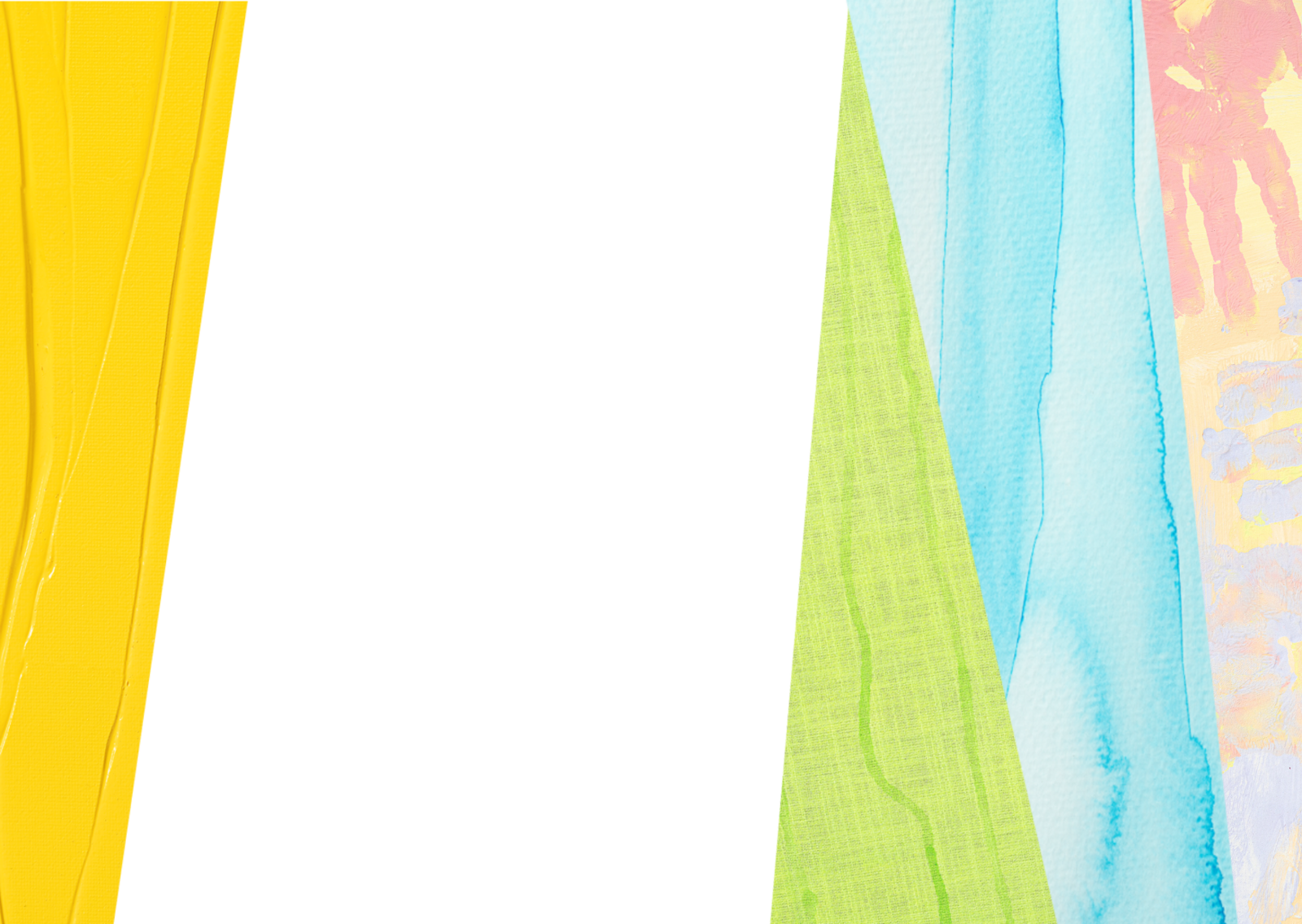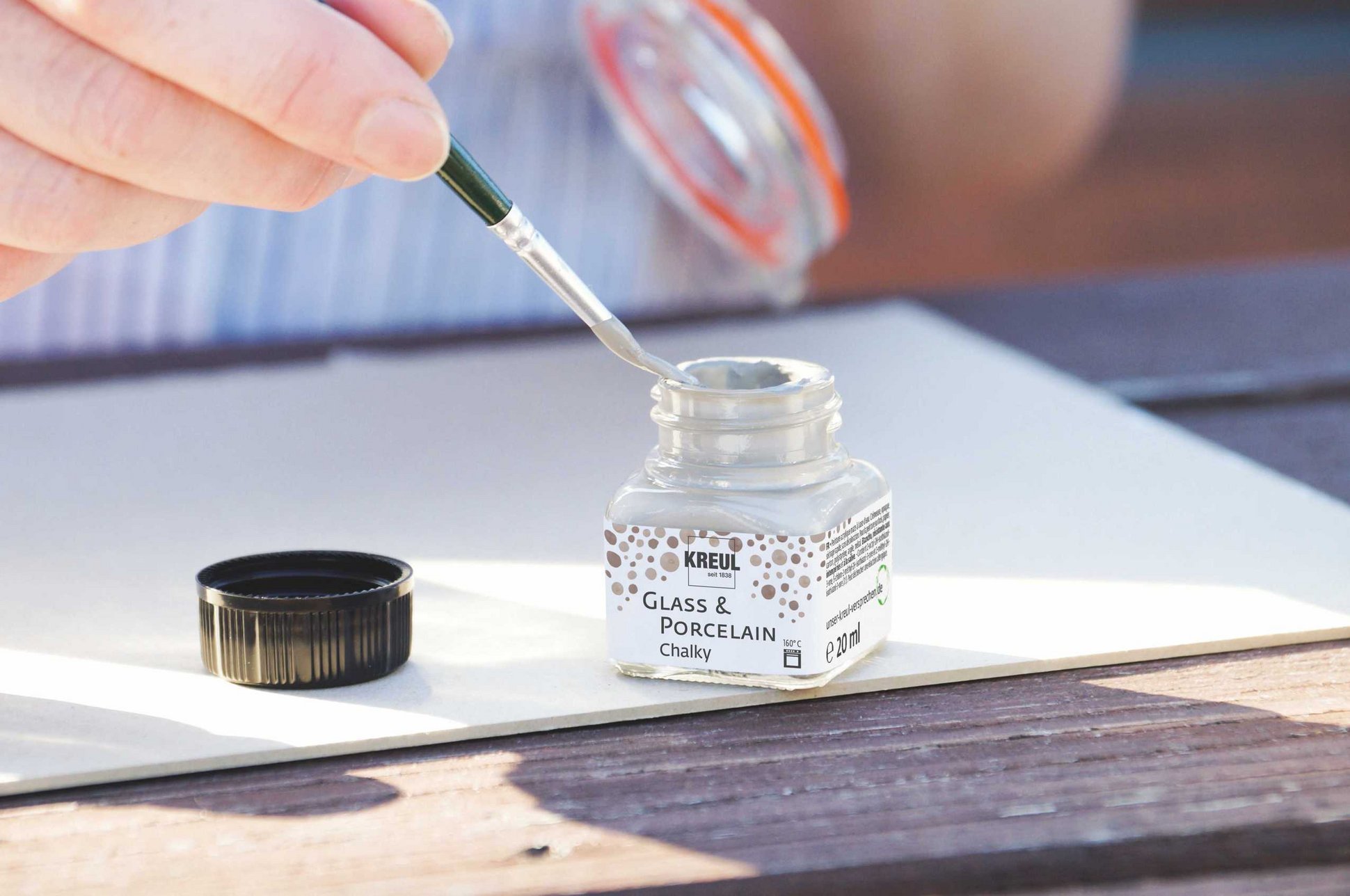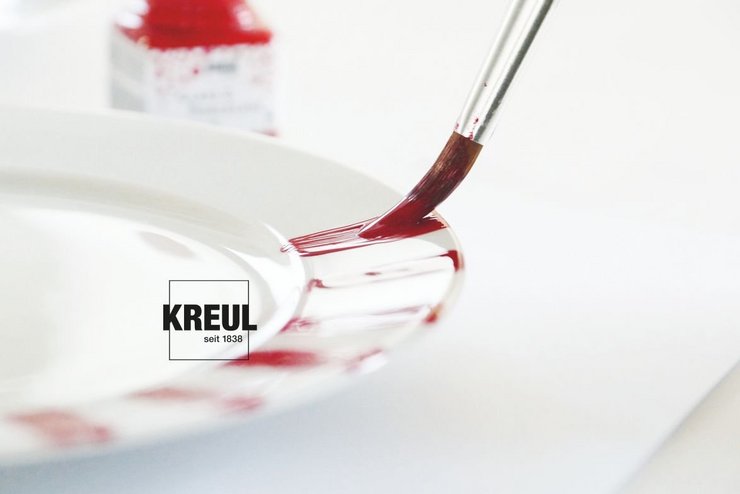
Frequently asked questions on the KREUL Glass & Porcelain Paints
01/17/2019 |- KREUL Glass & Porcelain Classic
- KREUL Glass & Porcelain Chalky
- KREUL Glass & Porcelain Clear
- KREUL Glass & Porcelain Pen Classic
- KREUL Glass & Porcelain Pen Chalky
- KREUL Glass & Porcelain Pen Clear
- KREUL Glass & Porcelain Pen Easy
- KREUL Glass & Porcelain Pen Metallic
- KREUL Glass & Porcelain Pen Glitter
- Ideen für Kreative
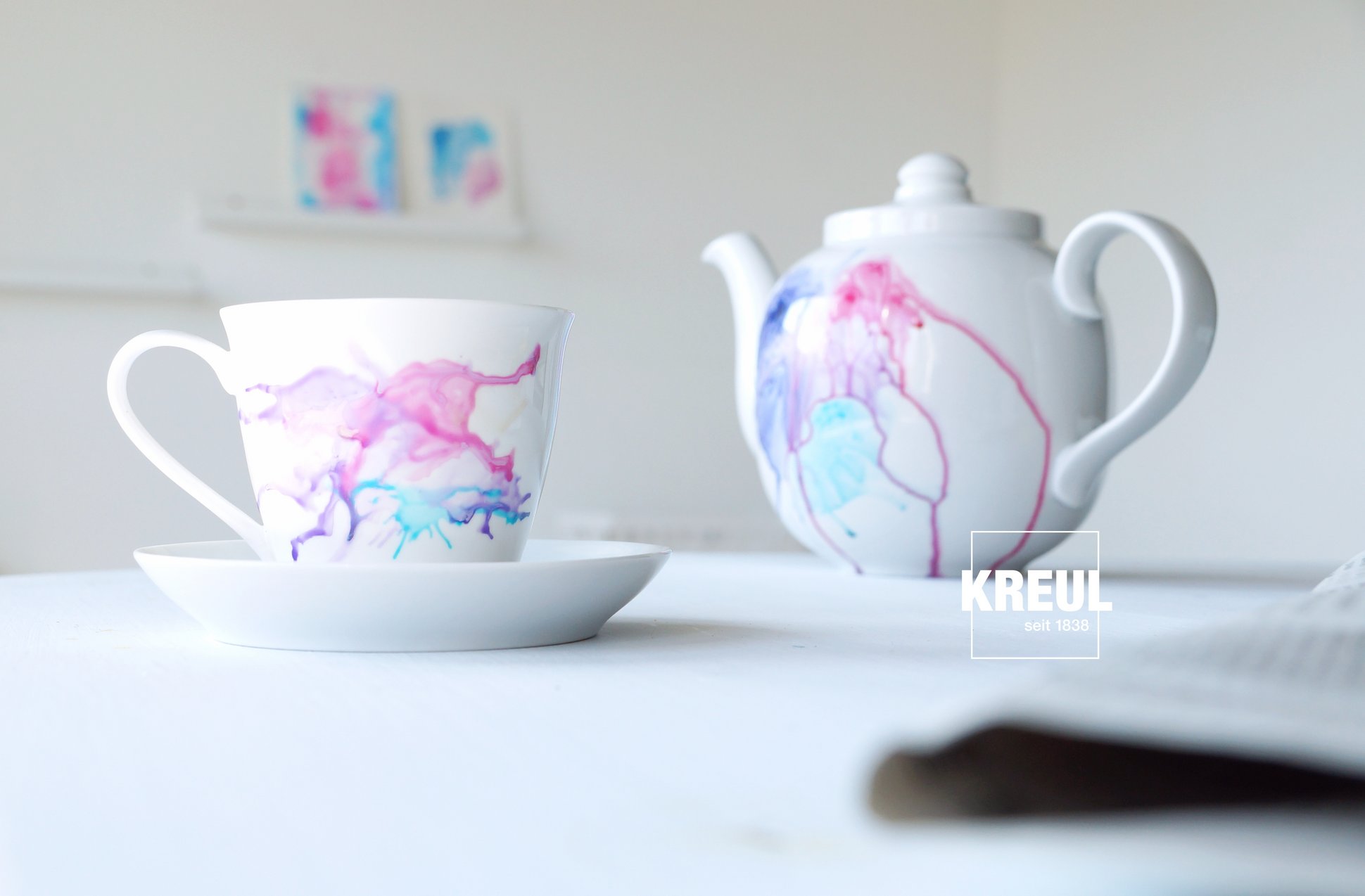
What should I keep in mind while painting glass and porcelain?
The object must be heat-resistant, smooth, clean and free of grease. At best, before painting clean it manually with a detergent - not in a dishwasher so that one doesn't get a drip-off effect.
Can one eat from a painted plate?
It is important to keep the using and eating areas intact. This means that these areas should remain unpainted, e.g. the drinking edge including the inner side of cups and glasses as well as cut surfaces of plates that come into contact with food.
Can I somehow sketch out the motives?
Motive templates can be transferred in advance, e.g. with the KREUL Graphite Copying Paper (Art.-Nr. 23048). Alternatively, sketch out the motives free hand with the KREUL pencil (Art.-Nr. 8008) on the item. The pencil strokes will be overpainted by the paint. They can be washed out after the burn-in.
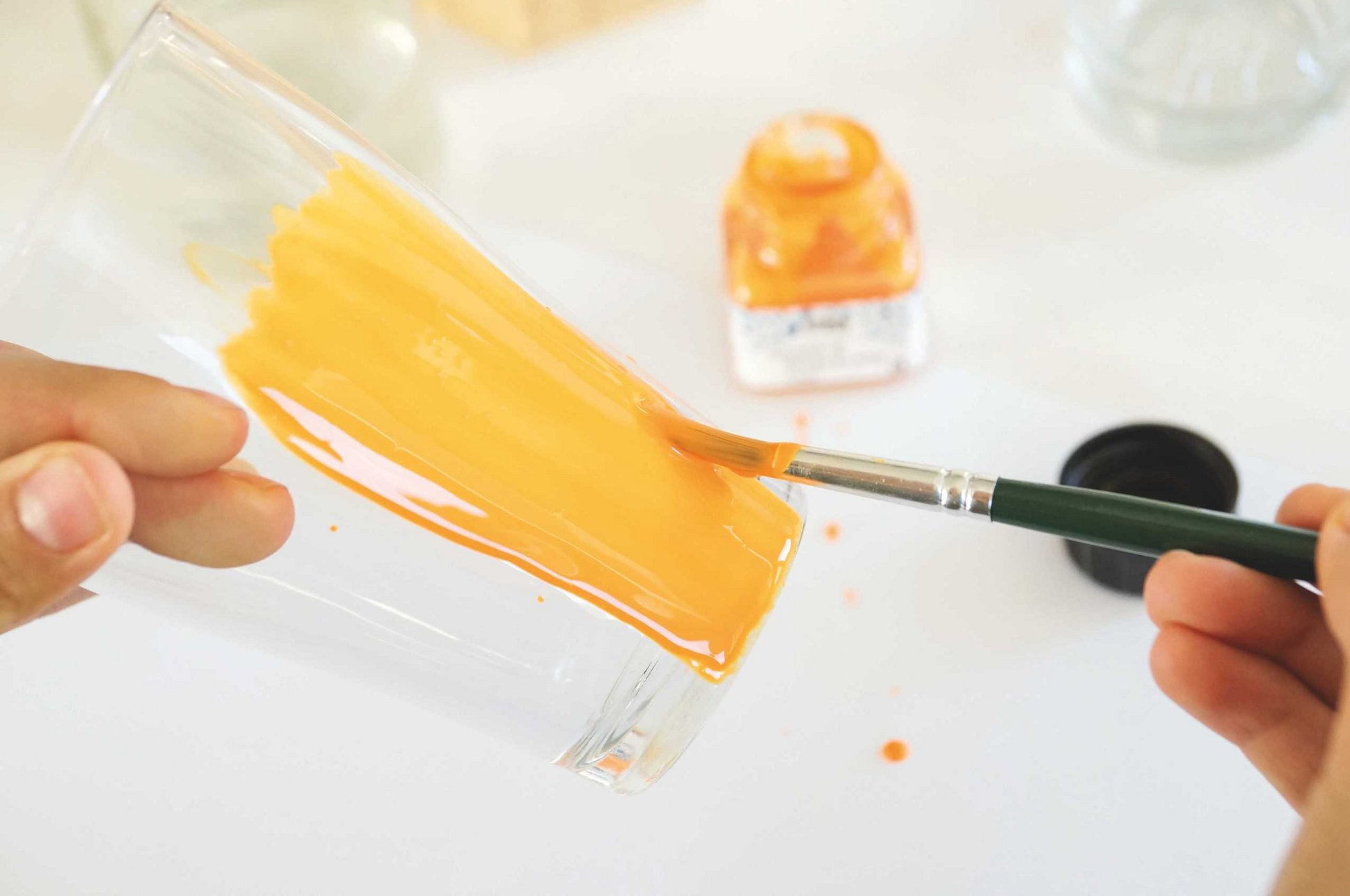
Which brush do you recommend for painting?
For the application of paint, we recommend a soft brush, e.g. the KREUL Rotmarder imit. (Art.-Nr. 7202..) or Pony hair synthetics (Art.-Nr. 7229..). These are so soft and fine. Moreover, they pick up the paint so perfectly.
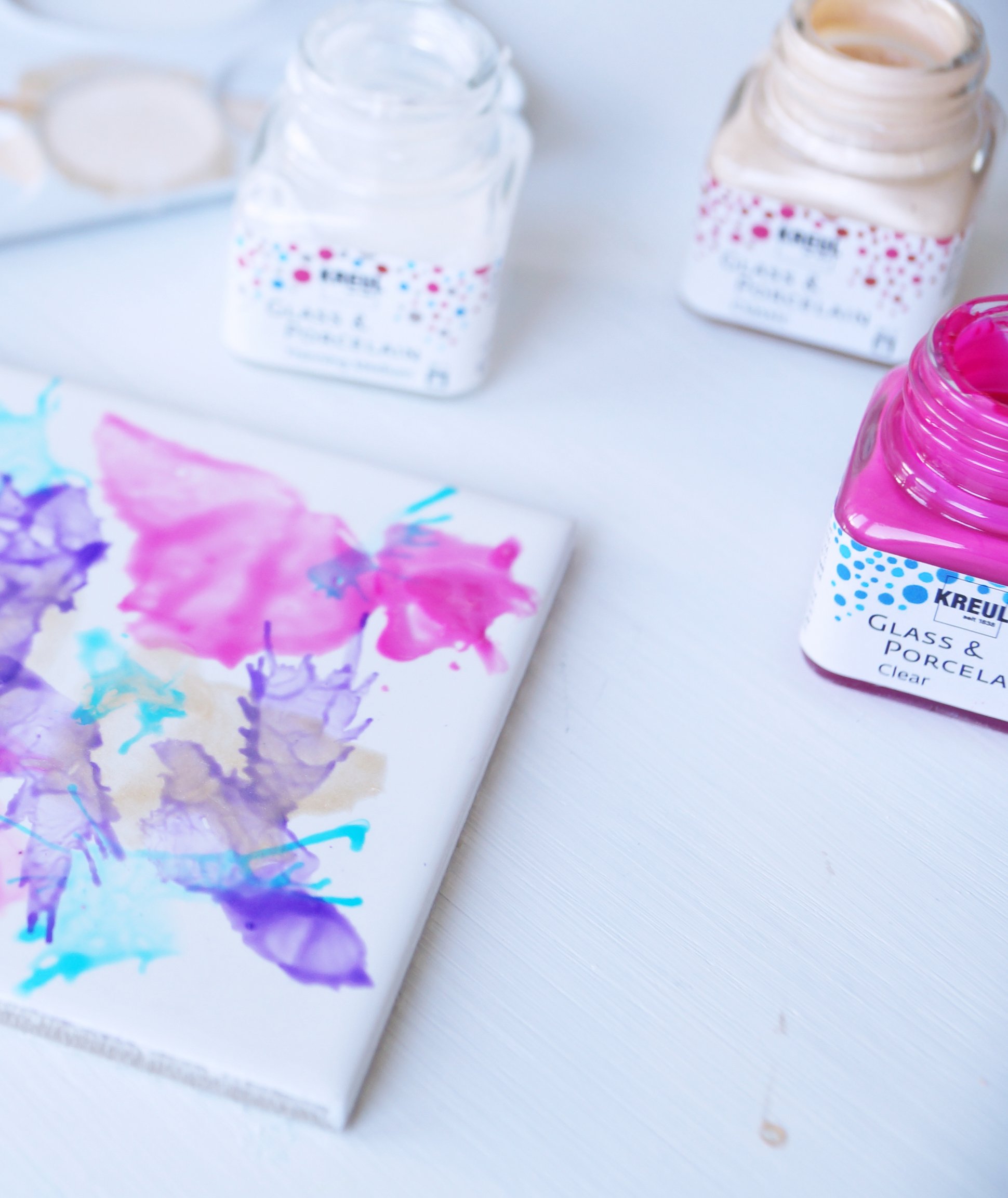
I like watercolour effects. Do they also appear with your glass and porcelain paints?
Yes, they do! But don't dilute the paint in water, rather in the transparent KREUL Glass & Porcelain Paint Thinner (Art.-Nr. 16273). Then the holding force will stay after burn-in.
I have painted something wrongly. Will I be able to remove the paint?
As long as the painting has not been baked yet, the paint can be removed from smooth surfaces with the help of water.
How does the burn-in function? Do I need a special oven?
You don't need a special oven, rather an absolutely common one in the kitchen. Just put the painted item into a cool oven and when the temperature reaches 160 °C, the painting should be baked for 90 minutes. Then let the item cool down and set in the oven.

Can I put the painted cup into the dishwasher right after it gets dry?
The painting will be water-resistant, dishwasher-safe and saliva resistant right after burn-in.
Some paints are baked for 30 minutes, others for 90. What should I do if I want to use both paints at the same time?
If you want to use paints in combination, then you should bake them 30 minutes at 160 °C. The painting will however be of limited suitability for dishwasher use.
Good to know:
- The item you paint on must be heat-resistant, smooth, clean and free of grease: Clean it by hand with detergent before painting – not in the dishwasher, so that no “pearl-off effect” is applied.
- Do not paint the area used for eating / drinking, e.g. drinking rims, the inner surfaces of cups and glasses or the cutting surfaces of plates that come into contact with food.
- Motif templates can be transferred in advance e.g. with KREUL Graphite paper. Alternatively, draw a motif by hand using the KREUL Drawing Pencil. Do not paint over the pencil strokes. They can be wiped off after baking.
- For the paint application we recommend a soft brush, e.g. KREUL Red Sable imit. or Pony Hair.
- Do not dilute the paints with water, but with KREUL Glass & Porcelain Thinning medium. That way the adhesive force is retained after baking.
- As long as the pain has not been baked on, you can remove it from smooth surfaces with water.
- Place painted objects in a cold oven. Bake the painted objects for 90 minutes once a temperature of 160 °C is reached. Allow objects to cool and harden in the oven.
- After baking, your painting is water-proof and saliva-proof and dishwasher-safe.
- Bake at 160 °C for 30 minutes if you have used the paint in combination with KREUL Glass & Porcelain Pen Glitter. In that case, the paint is only conditionally dishwasher-safe.
- Brushes and tools can be cleaned easily with water.
